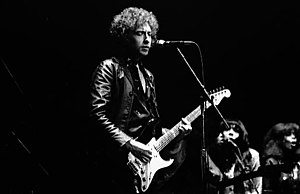 |
| Turn On, Tune In, Drop Out (Original Movie Soundtrack) (Photo credit: Wikipedia) |
by Barbara Graham, UTNE Reader:
http://www.utne.com
By the time I heard Timothy Leary chant “Turn on, tune
in, drop out” from the stage of New York’s Fillmore East, I had already
quit college.
The year was 1967, and Leary’s battle cry was for me more a
confirmation of what I already believed than a call to action.
I had never been much good at doing things that didn’t
arouse my passion.
Even when I was a young girl, it was obvious that I
had been born without the stick-to-it, nose-to-the-grindstone gene.
I
was stubborn, tenacious in my devotion to the people and things I loved,
disdainful of everything else. There was no in-between.
In high school I
got straight A’s in English and flunked math. When it came time for
college, I enrolled at NYU because it was the only way I could think of
to live in Greenwich Village and get my parents to pick up the tab. But I
rarely made it to classes and dropped out one month into my sophomore
year.
That was the first time I felt the rush of quitting, the
instant high of cutting loose, the biochemical buzz of burning my
bridges. The charge had to do not with leaving college for something
else, but with leaving, period - the pure act of making the break.
Suddenly it seemed possible to reinvent myself, to discard my old life
like last year’s outfit and step into a new one - free from the
responsibilities and relationships that had dragged me down. I got an
unlisted telephone number and warned my parents to stay away. “When one
jumps over the edge, one is bound to land somewhere,” wrote D.H.
Lawrence, and for a long time this was my mantra.
It didn’t take
long for me to find a collaborator, a master of disappearing acts who
made me look like a rookie. Brian was ready to morph one life into the
next on the turn of a dime. I became his loyal apprentice and during the
summer of 1968, shortly after Bobby Kennedy and Martin Luther King Jr.,
were gunned down, we sold everything we owned and quit our jobs, our
friends, our apartment, the urban jungle, America and the blight of
Vietnam, and fled to Europe.
But our new life didn’t quite match our
dreams: As winter neared, we found ourselves living in a rusty old van
on the outskirts of Rome, hungry and cold and hard up for cash. From
there, we boarded a freighter for Puerto Rico - which turned out not to be
the nirvana we’d imagined, either - especially after the little episode
with customs officials over a speck of hashish.
Still, a pattern had
been set: living in one place, dreaming of another, working at odd jobs
(mine included secretary, salesgirl, cocktail waitress, draft counselor,
nude model, warehouse clerk, candle maker), earning just enough money
to get us to the next destination.
We crisscrossed the United States,
went north to British Columbia, and lived in every conceivable sort of
dwelling from tenements and tents to farmhouses and plywood shacks.
Sometimes I’d grow attached to a place and plant a garden, thinking that
this time things would work out and we’d stay forever - or at least long
enough to see the flowers bloom.
But something always went wrong: It
rained too much (British Columbia), the cost of living was too high
(Colorado), the air wasn’t pure enough (Southern California), or we
couldn’t find work that was meaningful, not to mention lucrative enough
(everywhere).












